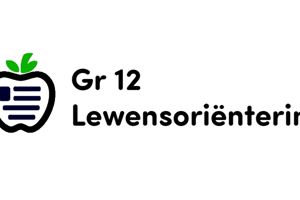Podcast
Questions and Answers
What is a key purpose of performance evaluation?
What is a key purpose of performance evaluation?
- To avoid training employees
- To solely determine salary increments
- To administer punishments for poor performance
- To evaluate employee efficiency and identify weaknesses (correct)
Performance evaluation is not concerned with identifying strengths in an employee's capabilities.
Performance evaluation is not concerned with identifying strengths in an employee's capabilities.
False (B)
Name one item that could be quantified in a performance evaluation.
Name one item that could be quantified in a performance evaluation.
Attendance
Performance evaluations must be _____ to be effective.
Performance evaluations must be _____ to be effective.
Which of the following is NOT a sub-skill related to teacher performance evaluation?
Which of the following is NOT a sub-skill related to teacher performance evaluation?
The standards for performance evaluation should be communicated from the beginning, such as during training.
The standards for performance evaluation should be communicated from the beginning, such as during training.
One example of a quantifiable measure in performance evaluation is the _______ entered.
One example of a quantifiable measure in performance evaluation is the _______ entered.
What is an example of a performance dimension that might be considered in evaluations of teachers?
What is an example of a performance dimension that might be considered in evaluations of teachers?
Match the performance items with their respective evaluation metrics:
Match the performance items with their respective evaluation metrics:
What foundational element must be established for effective performance evaluation?
What foundational element must be established for effective performance evaluation?
Flashcards are hidden until you start studying
Study Notes
Job Contracts and Analysis
- Job analysis (JA) is crucial for creating a job contract; no contract exists without a proper analysis.
- Start with the job title and refer to the organizational chart to ensure alignment.
- Thoroughly read the job description before signing any contract.
Job Analysis and Job Description
- Job analysis involves gathering information to create accurate job descriptions.
- Existing job descriptions can be found online as a primary source.
- Collaborate with subject matter experts (SMEs) and senior staff for insights.
- Research the potential employer’s organization to understand the role better.
Recruitment and Screening Techniques
- Real-time skills observation during recruitment helps assess applicants' abilities.
- Early recruitment occurs through social media and online presence before interviews.
- Acknowledge that hiring involves more than just skills; attitude is equally important.
Recruitment Standards
- Set clear quality standards for hiring to identify suitable candidates.
- Define desired attributes in applicants to maintain organizational culture.
- Applicants should understand standards to facilitate hiring decisions.
Training and Development
- Training is essential for ensuring employees possess necessary skills for their roles.
- It involves systematic acquisition of knowledge and skills to improve performance.
- Needs analysis identifies specific skills that require training, enhancing employee capabilities.
- Training programs should be carefully designed based on these needs.
Employee Evaluation and Performance
- Performance evaluations determine employee efficiency and are predefined in job descriptions.
- Set standards for performance early in the onboarding process.
- Multisource feedback allows for a comprehensive understanding of performance, considering various metrics.
Employee Satisfaction and Retention
- Low job satisfaction can lead to absenteeism, high turnover, and counterproductive behaviors.
- Fairness and transparency in the workplace are crucial for employee morale and commitment.
- Ensure that employees’ skills and job roles align with organizational needs to promote satisfaction.
Basic Principles for Workplace Happiness
- Recognize that happiness in the workplace varies across individuals; it's influenced by personality.
- Hire people whose skills (SHAPE) align with the job requirements, rather than solely focusing on their qualifications.
- Leadership should embody the organization's vision to inspire employees effectively.
Key Takeaways
- Evaluate employee performance regularly using quantifiable metrics, such as attendance and output.
- Performance evaluations serve multiple purposes, including identifying training needs, facilitating promotions, and informing termination decisions.
- Ensure that recruitment tools and training programs are strategically aligned with business goals.
Studying That Suits You
Use AI to generate personalized quizzes and flashcards to suit your learning preferences.




